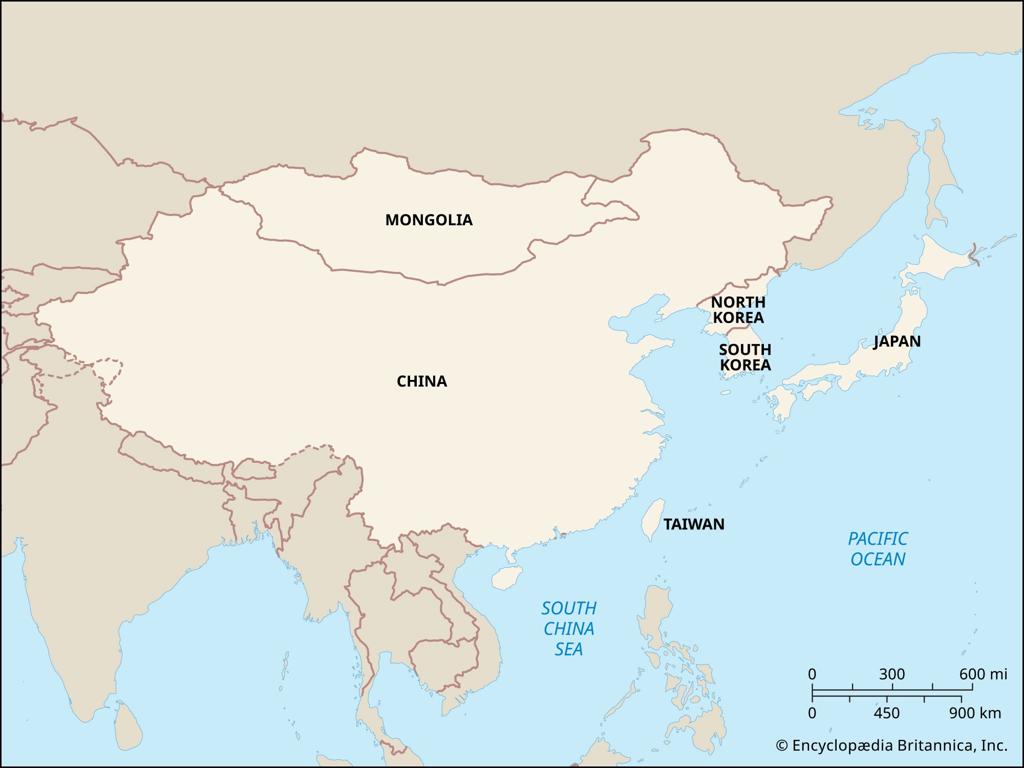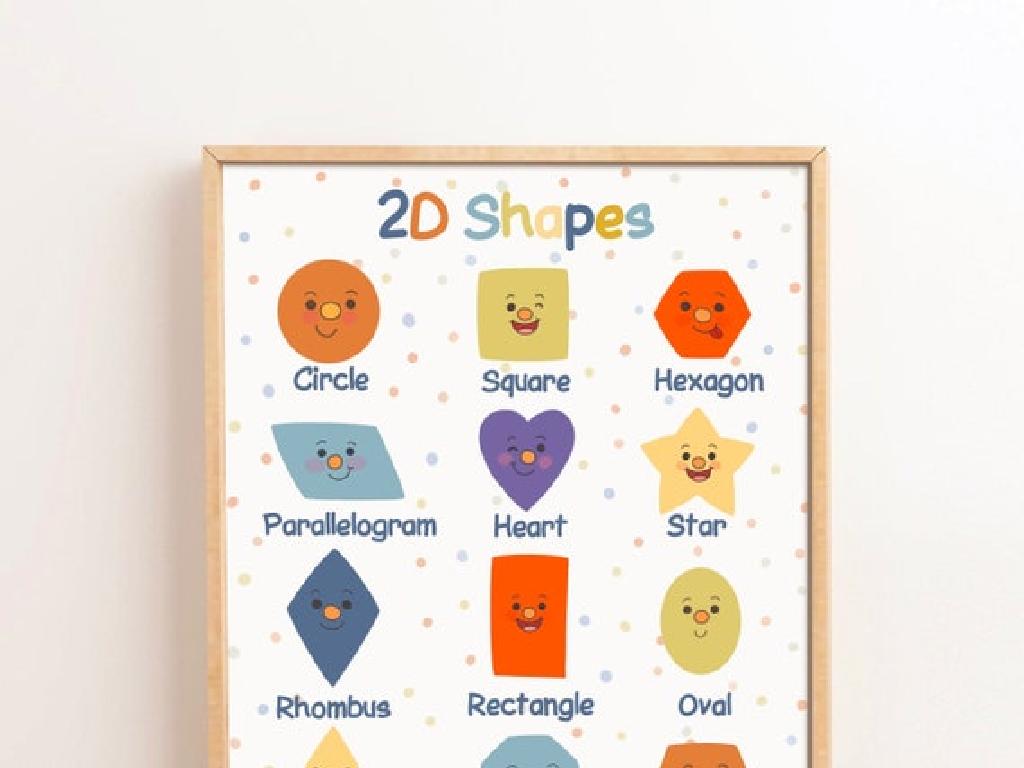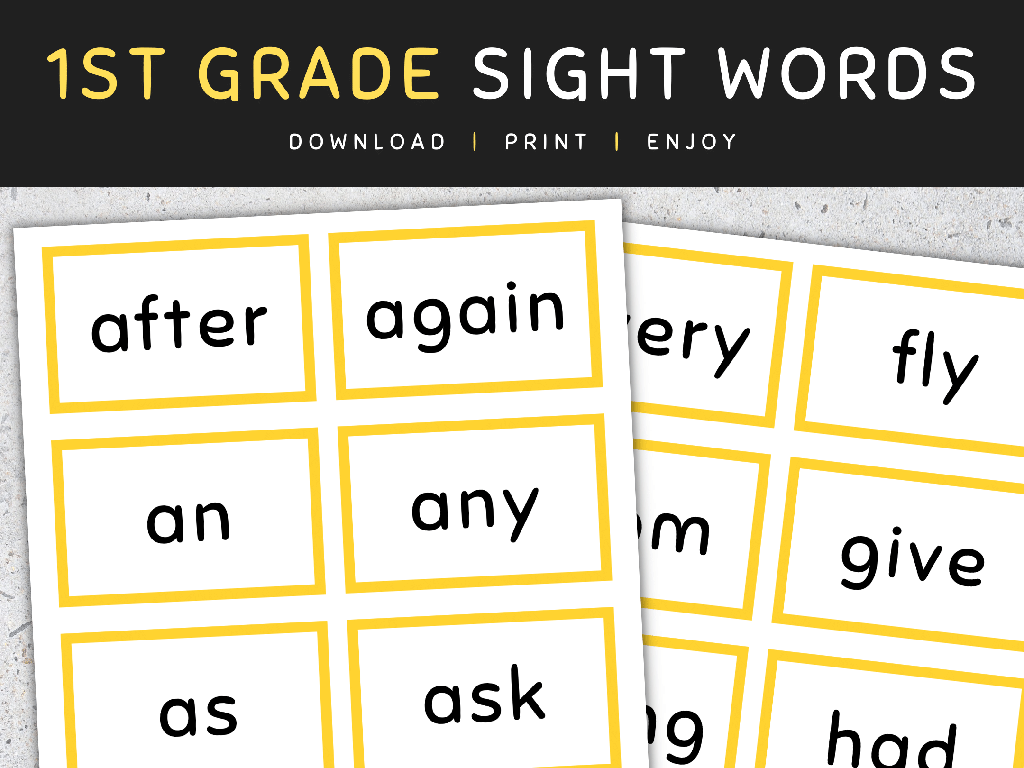Nets Of Three-Dimensional Figures
Subject: Math
Grade: Sixth grade
Topic: Three-Dimensional Figures
Please LOG IN to download the presentation. Access is available to registered users only.
View More Content
Exploring 3D Figures
– What are 3D figures?
– Objects with length, width, and height
– 3D figures around us
– Examples: Balls, boxes, and cans
– 3D vs 2D figures
– 2D are flat, 3D have volume
– Characteristics of 3D figures
– They have faces, edges, and vertices
|
This slide introduces students to the concept of three-dimensional figures, emphasizing their presence in everyday life and how they differ from two-dimensional figures. Start by defining 3D figures as objects with length, width, and height, which can be measured. Provide relatable examples such as soccer balls, cereal boxes, and soda cans to help students identify 3D figures in their surroundings. Highlight the difference between 2D and 3D figures by explaining that 2D figures are flat with only length and width, while 3D figures have volume and can be filled. Discuss the characteristics of 3D figures, such as faces (flat surfaces), edges (line where two faces meet), and vertices (points where edges meet). Encourage students to bring examples of 3D figures from home for the next class to reinforce their understanding.
Exploring Nets of 3D Figures
– What is a net in geometry?
– A net is a 2D shape that can be folded to form a 3D figure.
– Nets as 3D figure blueprints
– Nets show all faces of a 3D figure in one view.
– Common 3D shapes and their nets
– Think of cubes, pyramids, and their corresponding unfolded shapes.
– Visualizing shapes with nets
– Helps understand how 2D shapes make up 3D figures.
|
Introduce the concept of a net as a two-dimensional representation of a three-dimensional figure. Explain that nets are like blueprints that can be folded along the edges to create the surface of a 3D shape. Provide examples of nets for common 3D shapes such as cubes, pyramids, and cylinders to help students visualize the concept. Emphasize the importance of understanding the relationship between 2D and 3D shapes in geometry. Encourage students to cut out and fold paper nets to reinforce the learning experience.
Nets for a Cube
– A cube has 6 square faces
– Each face is identical in size and shape
– Unfolding a cube creates a net
– A net is a 2D representation of 3D object
– Activity: Create a cube from a net
– Use scissors to cut out and fold along the lines
|
This slide introduces students to the concept of nets for three-dimensional figures, specifically a cube. Begin by explaining that a cube has six faces, all of which are squares of the same size. Show how these faces are arranged in a three-dimensional space. Then, demonstrate how a cube can be unfolded into a two-dimensional net, which is a flat layout of all its faces. For the activity, provide students with a template of a cube net to cut out and fold. This hands-on activity will help them understand how the two-dimensional net corresponds to the three-dimensional shape. Offer guidance on cutting accurately and folding neatly to ensure the net forms a perfect cube. Encourage students to decorate their cubes to make the activity more engaging.
Nets for a Rectangular Prism
– Identify faces, edges, vertices
– Faces are flat surfaces, edges are lines where faces meet, vertices are corners.
– Unfold a prism into a net
– Imagine opening a box so it lays flat.
– Real-life rectangular prism objects
– Think of cereal boxes, bricks, or books.
– Activity: Create your own net
– Use paper to make a net and fold into a prism.
|
This slide introduces students to the concept of nets for three-dimensional figures, specifically focusing on a rectangular prism. Begin by explaining the basic elements of a prism: faces (the flat surfaces), edges (the lines where two faces meet), and vertices (the corners where edges meet). Demonstrate how a rectangular prism can be unfolded into a net, which is a two-dimensional representation of all its faces. Provide relatable examples of real-life objects that have the shape of a rectangular prism. For the class activity, provide students with templates to cut out and fold into their own rectangular prisms, reinforcing the relationship between the net and the 3D shape. This hands-on activity will help solidify their understanding of the geometry involved.
Nets for Other Polyhedra
– Explore pyramid and cylinder nets
– A net is a 2D shape that can be folded to form a 3D figure like a pyramid or cylinder.
– Discuss properties of 3D figures
– Properties include faces, edges, and vertices. Pyramids have a base and triangular faces; cylinders have circular bases and a curved surface.
– Match 3D figures to their nets
– Look at different nets and figure out which 3D shape they’ll make when folded.
– Understand nets in real-world objects
– Consider everyday items like tents (pyramids) or cans (cylinders) and their nets.
|
This slide introduces students to the concept of nets for more complex polyhedra such as pyramids and cylinders. Begin by explaining what a net is and how it relates to 3D figures. Discuss the specific properties of these figures, such as the number of faces, edges, and vertices. Engage the class with a challenge to match various nets with their corresponding 3D figures, reinforcing their understanding of the relationship between two-dimensional and three-dimensional shapes. Encourage students to think about real-world objects that resemble these shapes and how they would look if unfolded into a net. This will help them visualize and better grasp the concept of nets in practical terms.
Creating Your Own Nets
– Designing a net for a 3D figure
– Follow steps to unfold a 3D figure into a 2D net
– Tabs and assembly considerations
– Include tabs for gluing edges together
– Class activity: Build your own net
– Each student receives a 3D figure to create a net for
– Understanding through creation
|
This slide introduces the concept of creating nets for three-dimensional figures. Start by explaining the process of designing a net, which involves visualizing and unfolding a 3D figure into a flat 2D shape. Emphasize the importance of including tabs on the net, which are essential for assembling the figure back into its 3D form. During the class activity, assign different 3D figures to students and guide them through the process of creating their own nets. This hands-on activity will help students understand the relationship between two-dimensional shapes and their corresponding three-dimensional figures. Provide examples of nets for common 3D shapes like cubes, pyramids, and cylinders to help students get started. Encourage creativity and assist students as needed.
Net Construction Challenge
– Divide into small groups
– Each group gets a unique 3D figure
– Create and assemble a net
– Use scissors and glue to cut out and assemble the net into the 3D figure.
– Discuss challenges and strategies
– Share experiences and problem-solving techniques used during the activity.
|
This class activity is designed to encourage teamwork and hands-on learning. By dividing the class into small groups, each group can focus on their assigned 3D figure, such as a cube, pyramid, or cylinder. Provide each group with the necessary materials, including cardstock or paper for the net, scissors, and glue. After the groups have created and assembled their nets into the 3D figures, facilitate a discussion where they can talk about any difficulties they encountered and how they overcame them. This will help students learn from each other and understand the practical aspects of constructing nets. Possible variations of the activity could include using different materials, timed challenges, or having students design their own 3D figures to create nets for.
Review and Reflection: Nets of 3D Figures
– Recap of today’s key concepts
– Precision in nets creation
– Accurate measurements ensure nets fit together correctly
– Nets in real-life applications
– Packaging design, construction, and art
– Reflect on today’s learning
|
As we conclude today’s lesson on the nets of three-dimensional figures, it’s important to review the key concepts to reinforce learning. Emphasize the importance of precision in creating nets, as accurate measurements are crucial for the nets to assemble correctly into 3D shapes. Discuss how understanding nets is not just a mathematical skill but also applicable in real-life situations such as designing packaging, understanding construction blueprints, and creating art. Encourage students to reflect on what they’ve learned and how they might use this knowledge outside the classroom. Ask them to think of examples where they have seen or could use three-dimensional nets in their daily lives.






